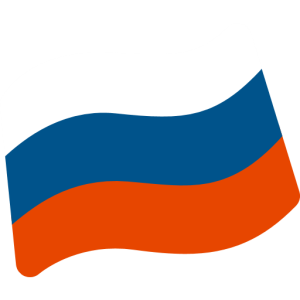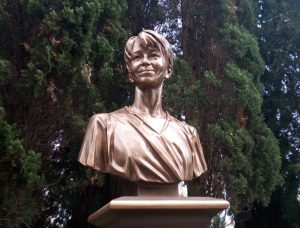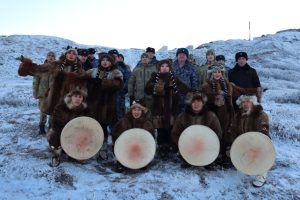Life After… a near-death experience for an adrenaline junkie – !
SINGAPORE – The sled tore through the frigid winter night in the middle of the Swiss Alps, slicing through slippery ice-crusted snow. On it was snowboarding guide Shane Ang, 37, who was winding down after work. He had spent a week leading tours in March 2022 in the alpine ski town of Laax, Switzerland. It was his second run down the slopes, and despite being a first-time sledder, his natural athleticism made the ride effortless. The wind roared as he weaved through corners, speeding past locals on the dimly lit course. Lulled by the idea that sledding was a family-friendly pastime, Mr Ang had left his helmet behind. It was freeing. It was exhilarating. Until the moment it wasn’t.The downhill course tapered, bending right. Mr Ang never made the turn. Instead, he trundled off course and was flung right into a tree, looming like a sentinel in the dark.His head slammed against the unyielding wood, the impact cracking his skull and snapping eight vertebrae, two of them in his neck. As the force transmitted down his spine, his breastbone also broke. For about three hours, he lay in a pit, a few metres away from his sled, before he was found. Inside his fractured skull, his brain was bleeding. As the pressure built, his brain was slowly shutting down. He was dying. The rescueSpeaking to The Straits Times nearly three years after that fateful night, Mr Ang said he has absolutely no memory of the accident. The last thing he remembered was switching on his headlamp as he readied himself to take to the slopes in the wintry dusk. Mr Ang crashed, suffering a cracked skull, eight broken vertebrae and a chest fracture, and was rescued near-death.PHOTO: SHANE ANGToday, there’s little sign of the extensive injuries that doctors warned could have left him with permanent disabilities, amnesia or epilepsy – if he even woke at all. But he defied the odds. From relearning how to walk and button his shirt, he completed a sprint triathlon just six months after emerging from a three-week medically induced coma.A lifelong outdoorsman, he has since returned to road cycling, climbing and snowboarding. He now works as an urban farming educator with social enterprise Edible Garden City and leads education programmes for Marine Stewards, a non-profit organisation. He credits his recovery to his stubborn streak – though, at times, friends and family feared he was pushing himself too hard. Beyond the medical intervention and hard work he put into rehabilitation, Mr Ang said the very fact that he was rescued in the nick of time was not up to chance. “The way things just fell in place, it’s not even about mere stars aligning. It was as if entire constellations and galaxies fell in place perfectly for things to work out right,” said Mr Ang. He pieced together his rescue through accounts from friends and medical staff. The patrol team was ready to call it off – until a former professional snowboarder in the community advised that they do a second search.PHOTO: SHANE ANGBack then, as the night deepened, a close friend noticed that Mr Ang had left his gear at the sledding facility.Feeling a stab of unease, the friend approached members of a ski patrol at the bar, who were off-duty and mid-drink, and convinced them to do a quick sweep. The first sweep yielded nothing. They were ready to call it off – until a former professional snowboarder in the community advised that they do a second search. Mr Ang’s friends, meanwhile, combed through GoPro footage for clues as to where he might be.Finally, the patrol team found him – unconscious, broken, buried in the cold. A helicopter rushed him to a hospital 25km away.“I was minutes away from dying, according to the surgeon,” said Mr Ang. Hospital protocol typically requires familial consent for high-risk surgery, but doctors bypassed it given the urgency. They operated on his brain to relieve the pressure, but a secondary bleed began. Hospital protocol typically requires familial consent for high-risk surgery, but doctors bypassed it given the urgency. PHOTO: SHANE ANGTo allow the organ to heal on its own, they induced a deep coma.In between two worldsAs doctors rushed to save him, news of his accident reached his loved ones in Singapore. His girlfriend, elder brother and mother were in Switzerland within two days. Doctors gave no timeline for when he might wake. Hoping he might hear them, Mr Ang’s loved ones talked to him, played his favourite music and videos, and printed photographs that they pinned by his bedside. His nurse also left him a note by his bedside – detailing what had happened to him and how the team was treating his injuries. Doctors gave no timeline for when he might wake.PHOTO: SHANE ANGMeanwhile, he was flitting between feverish dreams and glimpses of reality. “I really believe that these dreams were the brain’s attempts to make sense of things because a lot of what I dreamt mirrored real-world events, emotions and details, except deconstructed and expressed in very abstract narratives,” said Mr Ang.In his dreamworld, he was hospitalised too – but it was a ship, anchored just off HarbourFront in Singapore, with Mount Faber rising in the distance.The nurses who cared for him bore the same names as those in reality, as though his mind had taken the details of his waking world and rearranged them into a parallel existence.In his dreams, his doctor moonlighted as a mixologist who would serve up a “white lab cocktail mix” every time they met, mirroring medication that was delivered via a feeding tube in real life. As his coma gradually lifted after three weeks, he awoke to a battered body that felt alien to him.Hooked up to a ventilator, and with a feeding tube and catheter inserted in him, he was essentially bed-bound.Not yet realising the full extent of his injuries, Mr Ang argued with doctors to have his way. “For example, I was always fighting to be allowed to walk when I was barely even able to stand unsupported,” said Mr Ang. Mr Ang was flown back home and admitted to the Singapore General Hospital for three days.PHOTO: SHANE ANGHe said he was desperate to be self-sufficient again, so he did not have to need help with his day-to-day routines and bodily functions. Mr Ang only realised that he was unable to move the left side of his body when he tried standing unassisted, only to collapse back on his bed. He also struggled to pick up and crush tissue paper with his left hand. “I realised I couldn’t do anything that required basic dexterity, buttoning and unbuttoning included. But I just kept trying; if I cannot button, then I’ll just try to button more,” he said.About a month after the accident, Mr Ang’s injuries stabilised, and he was able to breathe on his own.He was flown back home and admitted to the Singapore General Hospital for three days. After his discharge, he moved in with his girlfriend, who took the time to nurse him back to health while he continued with his recovery. ‘Life is to be lived, not survived’But his first true steps towards full recovery were yet to come – beginning with walking on his own again. Mr Ang said: “I never realised how complex the act of walking is. Every step was a trust fall, hoping that the left foot would step up to the task.”To guide him, his physiotherapists would give him instructions such as no hunching, pointing his feet forward, and keeping his body upright. With their help, he regained his ability to walk in about a month. Despite the progress, Mr Ang could still feel his muscles wasting away. The reality of his weakened state hit him when he noticed his resting heart rate had surged to 100 to 120 beats per minute – far above his pre-accident rate of 65. Despite the progress, Mr Ang could still feel his muscles wasting away.PHOTO: SHANE ANGDriven by the need to reclaim his fitness, he set his sights on an ambitious goal: completing a sprint triathlon that was being held in a few months. While half the distance of an Olympic triathlon, the shorter version still covers a challenging 750m swim, 20km bike ride and 5km run.“As reckless as it may sound, it was a very calculated decision. I always consulted my physiotherapists and doctor friends before attempting anything,” said Mr Ang. For him, the race wasn’t about speed or even finishing – it was about the training that would help with the gradual rebuilding of strength.Driven by the need to reclaim his fitness, Mr Ang set his sights on an ambitious goal: completing a sprint triathlon that was being held in a few months. ST PHOTO: BRIAN TEOBut first, he had to convince his worried friends and family that he could do it.“At a certain point, life gets pointless if it’s constantly filled with fear and doubt. I will take due caution and calculated risks because to me life is to be lived, not survived,” he said. Mr Ang’s girlfriend, who wants to be known only as Jamie S., said that she knew she could not dissuade him.“I think the only thing I could do to support him was to enable him to train for it (the triathlon), to ensure that he has friends who are doing it with him and to be there watching it on the way through,” she said. Preparing for the raceThe road to race day proved to be trying. Swimming was Mr Ang’s greatest hurdle at first. His stiff neck made it nearly impossible to turn his head to breathe, and his early sessions left him sputtering and swallowing pool water. But he persisted, improving bit by bit. Running was painful too. “The first run I did actually made me question my sanity and life decisions because there was discomfort that shot up my spine from the impact of every landing,” said Mr Ang. It was only after seeking advice from a seasoned runner that he discovered “high-cadence running” – short, rapid strides that reduced the impact on his body. With this technique, he slowly found his rhythm.Cycling was the simplest to ease into. His girlfriend trained with him on the open roads, scanning for cars as his limited neck mobility made quick backward glances difficult.Ms S. also kept him in check during the cycling sessions. “I stated my terms – like having to drive to the cycling path and to find a time when it’s not busy. So we just have to create a very safe environment,” she said. Mr Ang’s girlfriend trained with him on the open roads, scanning for cars as his limited neck mobility made quick backward glances difficult.ST PHOTO: BRIAN TEOTo test his reflexes – an area doctors warned might have been impaired – Mr Ang cautiously attempted mountain biking. Slipping on the wet trail, he managed to correct his balance without falling, which reassured him that his instincts were intact.The preparations paid off. On race day, wearing head protection, Mr Ang completed the course without incident. He also focused on his form and not performance or timing. With his girlfriend and good buddies cheering him on, he finished in a respectable 1hr 45 mins. “Completing the event felt like a huge relief, having proven to everyone that I am indeed still physically and capably myself. It was also reassuring to know I could still return to sports I love without compromising my safety,” said Mr Ang. A new lease of lifeWhile Mr Ang recovered physically, he also had to adjust to a personality shift, most likely triggered by his traumatic brain injury.PHOTO: SHANE ANGDr Lester Lee, a consultant from the department of neurosurgery at the National Neuroscience Institute and one of Mr Ang’s doctors, said his recovery was “good and robust”. Dr Lee said much of it came down to his mental strength and determination. “Other patients with head injury can learn that with persistence and determination, they too have a possibility that they can recover well,” said Dr Lee. While Mr Ang recovered physically, he also had to adjust to a personality shift, most likely triggered by his traumatic brain injury. Such injuries can damage areas in the brain responsible for emotional regulation and social behaviour. As an adrenaline junkie, Mr Ang is aware that his threshold for stimulation will keep getting higher.PHOTO: SHANE ANGMr Ang found himself being more straightforward, talkative and, at times, even confrontational, straining relationships with some of his friends. He would also get annoyed enough to leave angry comments in social media posts, something he never did before his accident. The changes happened so subtly that he only realised them a year ago. Fearful of losing his friends and reputation, Mr Ang consulted his neuropsychologist, who assured him that his manners and etiquette were hardwired, just bypassed as a result of the injury. To cope, Mr Ang now makes more effort to consider his words and actions before conveying them. He also had honest conversations with his friends and girlfriend, who had borne the brunt of his changes, and they are all understanding and supportive of him. “Do I like the new me? I don’t know. But I feel that a year on after discovering the change, I am more comfortable with who I am,” said Mr Ang. Mr Ang now works as an urban farming educator with social enterprise Edible Garden City.ST PHOTO: BRIAN TEOMs S., too, said the experience lifted their relationship to another level. “I got to know him better, and it made me realise that we are a good balance for each other.” Having to rebuild his life taught him to appreciate the little things. As an adrenaline junkie, Mr Ang is aware that his threshold for stimulation will keep getting higher. But, nowadays, he takes joy in more regular activities, such as cycling on park connectors, instead of requiring the challenge of conquering a technical trail. “Everything I regained and everything I can do now truly feels like a bonus – the freedom to walk to the toilet whenever I want to, take walks, to still be able to play the guitar, to talk and sing, to drink with friends.“I regret the accident, but I don’t regret all these perspectives I’ve gained through it.” Join ST’s WhatsApp Channel and get the latest news and must-reads.





КОММЕНТЫ